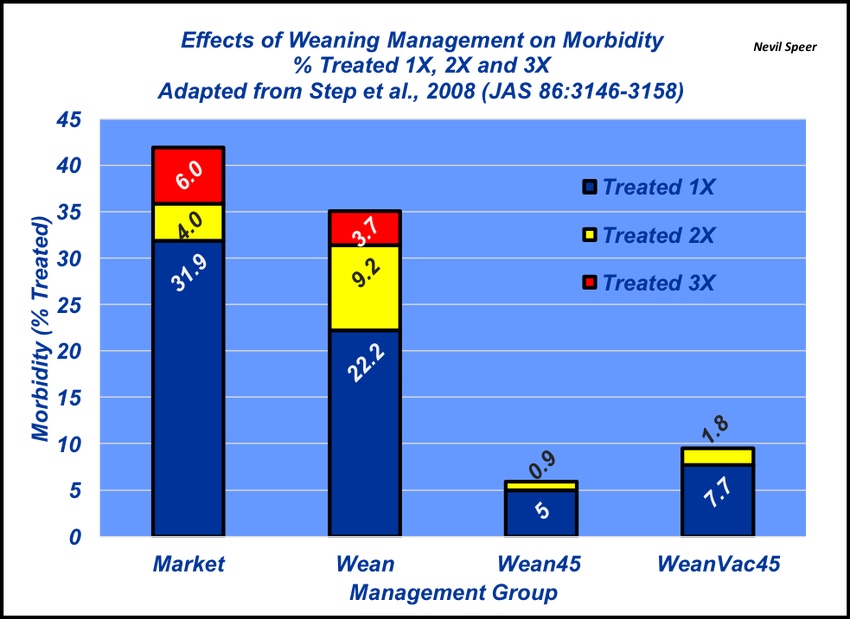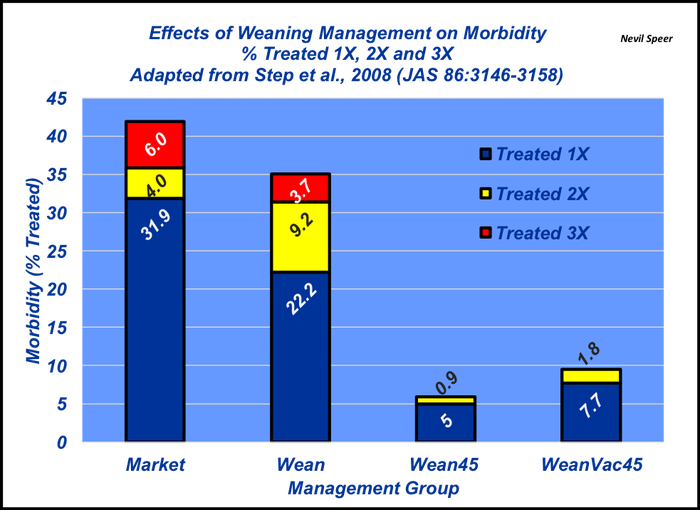Your weaning method and management of your weaned calves makes a big difference in your bottom line.
September 26, 2018

In recent weeks, this column has focused on the feeder cattle market to help producers better understand market principles while marketing is fresh on their mind amidst the fall marketing season.

This week’s illustration highlights some important research that was published by a team from Oklahoma State University and while the results are nearly 10 years old, they emphasize critical principles around weaning management. The research compared multiple-source cattle purchased through auction markets (Market) versus single-sourced cattle arriving directly from one ranch. Additionally, cattle arriving from the ranch were allocated to three different groups:
1. Weaned and immediately shipped to the feedyard (Wean),
2. Weaned on the ranch for 45 days before shipping – but not vaccinated (Wean45)
3. Weaned on the ranch for 45 days and vaccinated prior to shipment (WeanVac45)
Several things are important. First, regardless of grouping, ranch-sourced cattle had reduced morbidity versus the market-sourced cattle. Second, and most important, weaning 45 days at the ranch provided a distinct advantage versus the other two groups.
The second point underscores some observations made several weeks ago highlighting analysis of 23 Superior Livestock sales in 2017 representing 7,358 lots of cattle – based on analysis performed by Ken Odde and Mike King at Kansas State University. Based on this research, the analysis reveals that weaned cattle appropriately receive a distinct premium advantage in the marketplace.
That is, all three programs that included weaning as a core component received a minimum of nearly $4 per cwt compared to the VAC34 or 34+ program, calves vaccinated on cows 2-4 weeks prior to shipment – but not weaned.
What are your plans relative to weaning and vaccinating this spring’s calf crop. How does this data fit your expectations as you enter into the fall marketing season? Leave your thoughts in the comments section below.
Nevil Speer serves as an industry consultant and is based in Bowling Green, KY. Contact him at [email protected].
About the Author(s)
You May Also Like





